Justice Nature

What are the ethical implications of climate change and how can we address them ?
Climate change has significant ethical implications affecting nature, justice, and future generations. The discussion explores these dimensions and suggests strategies to address them, including respecting nature, ensuring intergenerational equity, promoting justice in climate action, and implementing policy initiatives, technological innovations, and social change to mitigate climate impacts.

What is climate justice and why is it important ?
Climate justice is a concept that aims to ensure fair treatment for all individuals, communities, and countries in the face of climate change. It involves the equitable distribution of benefits and burdens associated with both climate change mitigation efforts and adaptation strategies. Key aspects of climate justice include equity, recognition, and procedural fairness. Climate justice is important because it helps mitigate unequal impacts, promotes sustainable development, enhances participation and accountability, and fosters global cooperation. In conclusion, climate justice is not merely a moral imperative but also a practical necessity for crafting effective and enduring solutions to the challenges posed by climate change.

How can we achieve climate justice in a world with increasing inequality ?
Achieving climate justice in a world with increasing inequality requires strengthening international cooperation, advocating for environmental justice, investing in renewable energy, implementing circular economy principles, establishing legal frameworks, promoting education and awareness, supporting sustainable agriculture, and fostering urban sustainability. These strategies aim to ensure that all people have equal access to resources and protections from climate change, regardless of their socioeconomic status, race, or geographic location.

How does educational equity relate to social justice ?
Educational equity and social justice are interconnected concepts that aim to create a fair and just society. Educational equity involves providing equal opportunities for learning and addressing disparities in resources, funding, and support services between schools or communities. Social justice encompasses policies and practices that ensure everyone has equal rights, opportunities, and access to resources while eliminating discrimination based on various factors. The relationship between educational equity and social justice includes addressing systemic inequalities within the education system, providing access to quality education for all students, promoting diversity and inclusion, and empowering students to become agents of change in their communities. By achieving educational equity, we can work towards creating a more just and equitable society.

What are the key principles of climate justice ?
The text discusses the key principles of climate justice, which emphasizes fair and equitable solutions to climate change. The principles include: 1. **Recognition of Vulnerability** - Acknowledging that some communities are more susceptible to climate change's effects and prioritizing their needs in adaptation measures. 2. **Responsibility and Accountability** - Recognizing developed countries' disproportionate contribution to emissions and advocating for differentiated responsibilities in addressing climate change. 3. **Participation and Access to Decision-Making** - Ensuring all affected communities, including marginalized groups, have a say in climate policy decisions and promoting transparency. 4. **Protection of Human Rights** - Upholding rights to health, water, and food security, which are often threatened by climate change impacts. 5. **Intergenerational Equity** - Considering the rights and needs of future generations and advocating for sustainable development pathways. Overall, climate justice focuses on equity, human rights, and ethical treatment of people, especially those most affected by climate change.

Can you explain the concept of intergenerational climate justice ?
Intergenerational climate justice is a concept that deals with the ethical implications of climate change on future generations. It emphasizes the responsibility of the current generation to take actions that will not harm the well-being and quality of life of future generations. The concept is rooted in the idea that every generation has a duty to preserve the planet for those who will come after them. The key elements of intergenerational climate justice include ethical responsibility, sustainable development, intergenerational equity, and climate change mitigation and adaptation. These components are necessary to ensure the well-being of future generations and promote social justice by addressing the disproportionate impact of climate change on vulnerable populations. The importance of intergenerational climate justice cannot be overstated as it recognizes that climate change is a global issue that affects everyone, regardless of age or location. By taking action now, we can help ensure a better future for our children and grandchildren.
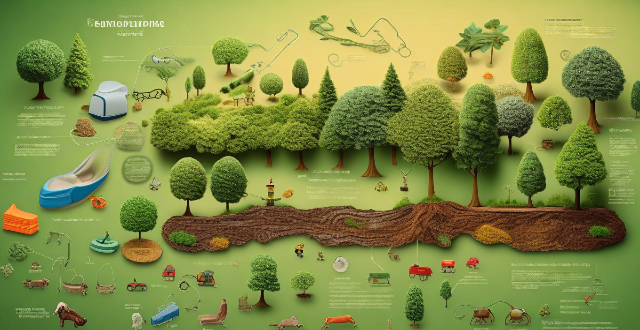
How does climate justice relate to environmental racism ?
This text discusses the interconnected reality of climate justice and environmental racism. It defines both terms, outlines their intersection in terms of historical and structural inequities, disproportionate impacts, mitigation and adaptation inequities, and exclusion from decision-making processes. It then proposes solutions to address this intersection, including promoting participatory democracy, equitable allocation of resources, enforcing environmental justice legislation, and building resilience through education and capacity building. Overall, it emphasizes the need for a more equitable approach to environmental protection and climate action that recognizes and challenges the root causes and impacts of environmental racism within the broader context of climate justice.
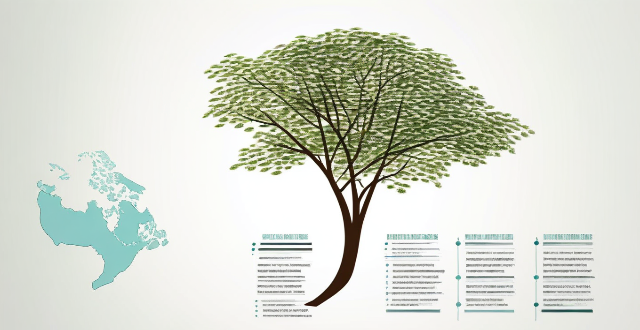
Can you provide examples of climate justice in action ?
Climate justice is a concept that recognizes the disproportionate impacts of climate change on vulnerable populations and communities. It emphasizes the need for equitable solutions that address both the causes and consequences of climate change, ensuring that those most affected by environmental harm have a voice in decision-making processes. Examples of climate justice in action include renewable energy adoption, green infrastructure and natural solutions, climate education and awareness, and climate policy and advocacy. These initiatives aim to mitigate the effects of climate change while building a more equitable society that can thrive amidst changing environmental conditions.

How does climate ethics relate to the concept of intergenerational justice ?
Climate ethics and intergenerational justice are important concepts that guide us in making decisions that promote a more equitable and sustainable future for all generations. Intergenerational equity, the precautionary principle, and sustainable development are key principles that should be considered when making decisions about resource use and emissions reductions. Governments, businesses, and individuals can all play a role in promoting climate ethics and intergenerational justice by adopting sustainable practices and supporting policies that prioritize climate action.

What role does climate justice play in addressing the impacts of climate change on vulnerable communities ?
Climate justice is crucial for addressing the disproportionate impacts of climate change on vulnerable communities. It emphasizes equity, fairness, sustainability, participation, and transparency in environmental policies and practices. Vulnerable communities face unique challenges due to limited resources and dependence on natural resources. Key principles of climate justice include equity, fairness, sustainability, participation, and transparency. Strategies for achieving climate justice involve inclusive policy making, capacity building, access to finance, technology transfer, information dissemination, strengthening institutions, and promoting resilience. Collaborative efforts at various levels can help achieve a more equitable and resilient world for all.

What are the best domestic travel destinations for nature lovers ?
Nature lovers are always in search of destinations that offer them the chance to explore, relax and connect with nature. Here are some of the best domestic travel destinations for nature lovers: 1. The Great Smoky Mountains National Park, Tennessee/North Carolina 2. Acadia National Park, Maine 3. Glacier National Park, Montana 4. Grand Canyon National Park, Arizona

Does exercising in nature provide additional emotional benefits ?
**Nature Exercise Benefits** - **Therapeutic Effects**: Reduces stress, enhances mood, offers cognitive benefits. - **Physical Health Impact**: Encourages physical activity, reduces injury risk. - **Social Interaction**: Fosters community building and family bonding.
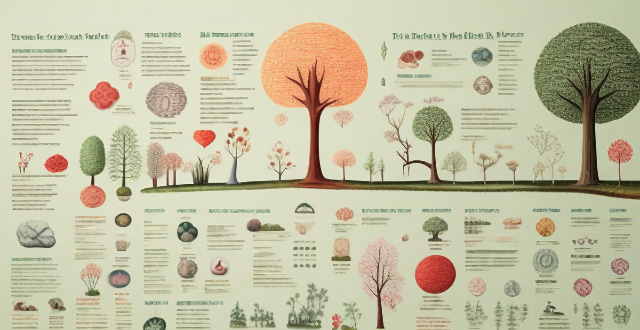
What is the relationship between climate change and environmental racism, and how can we address this issue through climate justice ?
Climate change and environmental racism are interconnected issues that disproportionately affect marginalized communities. The relationship between the two is multifaceted, involving displacement, health impacts, economic disparities, infrastructure vulnerabilities, and limited access to information and resources. To address these issues, pursuing climate justice is crucial, which involves ensuring equal representation in climate policy decisions and equitable distribution of benefits and burdens associated with climate action. Key strategies for achieving climate justice include community engagement, equitable resource allocation, health protection measures, economic opportunities, infrastructure resilience, access to information, legal protections, and global cooperation.

What are the must-visit photography sites for wildlife and nature lovers ?
For photography enthusiasts who have a passion for capturing the beauty of nature and wildlife, there are several must-visit sites that offer breathtaking views and unique opportunities to capture stunning photographs. Here are some of the top destinations for nature and wildlife photography: 1\. Serengeti National Park, Tanzania - Diverse range of animals, spectacular landscapes, Great Migration. 2\. Galápagos Islands, Ecuador - Unique species, marine iguanas, giant tortoises. 3\. Yellowstone National Park, USA - Geothermal features, diverse wildlife, spectacular landscapes. 4\. Amazon Rainforest, South America - Biodiversity, dense vegetation, misty atmosphere. 5\. Maasai Mara National Reserve, Kenya - Large population of big cats, stunning landscapes, Great Rift Valley.

What are the best times of year to go on a nature and wildlife vacation ?
The text is a guide to choosing the best time for nature and wildlife vacations. It suggests considering weather conditions, animal migration patterns, crowd levels, and local events when planning a trip. Spring is considered the best time for such vacations because of mild weather and lush landscapes, while summer offers warm weather but potentially crowded destinations. Fall provides beautiful scenery and cooler temperatures for hiking and wildlife spotting, while winter can offer unique opportunities for certain types of wildlife viewing. The text also advises researching specific animal migration schedules if interested in seeing particular species. It recommends visiting during shoulder or off-season for a quieter experience and considering local events for a cultural element. Overall, the guide emphasizes careful consideration of various factors to plan an immersive and rewarding nature and wildlife vacation.

What are the best destinations for a nature and wildlife tour ?
This text provides an overview of six top destinations for nature and wildlife tours worldwide. These include the Maasai Mara National Reserve in Kenya, the Galápagos Islands in Ecuador, the Amazon Rainforest spanning several South American countries, Kruger National Park in South Africa, Yellowstone National Park in the USA, and the Great Barrier Reef in Australia. Each destination is described with key features highlighting the unique wildlife viewing opportunities, cultural experiences, and natural wonders that can be found there. The text aims to provide a summary of these locations to help potential travelers choose their next adventure in nature and wildlife.
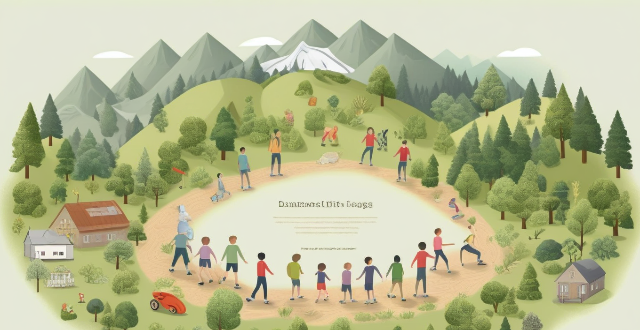
How do outdoor sports like hiking or mountaineering foster a deeper connection with nature and improve mental health ?
The text discusses the connection between outdoor sports, particularly hiking and mountaineering, and mental health. It highlights how these activities offer physical benefits such as fresh air and sunlight, which boost mood and energy levels, and the release of endorphins through physical activity. Mentally, being in nature encourages mindfulness and presence, reducing stress and anxiety, while the grandeur of nature can provide perspective on everyday worries. Physical challenges build stamina and resilience, with a sense of accomplishment from completing trails or reaching summits. Mental challenges include problem-solving and building resilience. Social interaction through shared experiences and forming supportive communities is also beneficial. Personal growth aspects include self-reliance and adaptability. The mind-body connection is emphasized through the meditative effects of nature and sensory engagement, as well as the physical well-being derived from cardiovascular health and muscle strength. Overall, outdoor sports like hiking or mountaineering provide numerous opportunities for improving mental health through various means.

What are the psychological benefits of connecting with nature, and how can they mitigate the effects of climate change ?
Connecting with nature has numerous psychological benefits that can significantly improve our mental and emotional well-being. These benefits include reducing stress and anxiety, boosting mood and happiness, improving concentration and cognitive function, enhancing creativity, promoting emotional resilience, and fostering mindfulness and present-moment awareness. Additionally, the psychological benefits of connecting with nature play a crucial role in mitigating the effects of climate change by increasing environmental awareness, promoting sustainable behaviors, inspiring collective action, and encouraging policy changes. By recognizing the importance of nature for our mental health and taking action to protect it, we can work towards a healthier planet and a happier population.

How can we achieve climate justice in the face of global warming ?
This article discusses strategies to achieve climate justice amid global warming, focusing on recognizing the impact on vulnerable populations, promoting equitable access to sustainable energy, supporting environmentally sustainable economic development, and advocating for international cooperation in climate negotiations.

How can individuals contribute to climate justice efforts ?
Climate justice is a crucial issue that requires collective action from individuals, communities, and governments worldwide. As an individual, you can play a significant role in promoting climate justice by adopting sustainable practices and advocating for policies that protect the environment and vulnerable populations. Here are some ways you can contribute to climate justice efforts: 1. Reduce Your Carbon Footprint - Use Public Transportation or Carpool - Bike or Walk for Short Distances - Switch to Renewable Energy Sources - Conserve Energy by Turning Off Lights and Unplugging Electronics When Not in Use - Recycle and Compost Properly Dispose of Recyclable Materials and Organic Waste - Reduce Plastic Use Bring Reusable Bags, Water Bottles, and Containers to Decrease Plastic Pollution 2. Support Sustainable Practices - Buy Local and Organic Support Local Farmers; Choose Organic Products Prioritizing Soil Health and Biodiversity - Eco-Friendly Shopping Buy Secondhand Goods; Choose Environmentally Friendly Brands Committed to Sustainability and Ethical Production Practices 3. Advocate for Climate Justice Policies - Participate in Community Actions Join Local Groups Working on Environmental Issues; Attend Meetings and Events Stay Informed About Local Climate Initiatives - Lobby for Legislation Contact Elected Officials Advocating for Stronger Climate Policies; Vote Responsibly Support Candidates Prioritizing Climate Action and Environmental Protection 4. Educate Others and Raise Awareness - Share Information Spread Knowledge Among Friends, Family, and Colleagues About Climate Change Urgency; Use Social Media to Share Educational Content and News Related to Climate Justice - Encourage Dialogue Host Discussions in Your Community About Climate Change Effects on Different Groups; Collaborate with Schools Integrating Climate Justice Lessons into Curriculums

How can environmental ethics help address climate change ?
Environmental ethics, a branch of philosophy, examines the moral relationship between humans and nature. It helps in addressing climate change by recognizing nature's intrinsic value, promoting stewardship and sustainability, encouraging intergenerational equity, and fostering global cooperation.

How does climate change impact social justice ?
Climate change has significant impacts on social justice, affecting marginalized communities, health outcomes, economic stability, migration patterns, and gender equality. Mitigation efforts to reduce greenhouse gas emissions and adaptation strategies to build resilience against the impacts of climate change are necessary to create a more equitable future for all.

How do Climate-Smart Technologies address environmental justice issues ?
Climate-smart technologies (CSTs) are innovative solutions that address climate change while promoting economic growth and social development. These technologies have the potential to address environmental justice issues by ensuring equitable distribution of the benefits and risks of climate change across different communities. CSTs can help reduce emissions from deforestation and forest degradation, promote renewable energy sources, enhance adaptive capacity, improve energy efficiency, support sustainable agriculture, and encourage waste reduction and recycling. By prioritizing equity in the development and deployment of these technologies, we can work towards a more just and sustainable future for all.
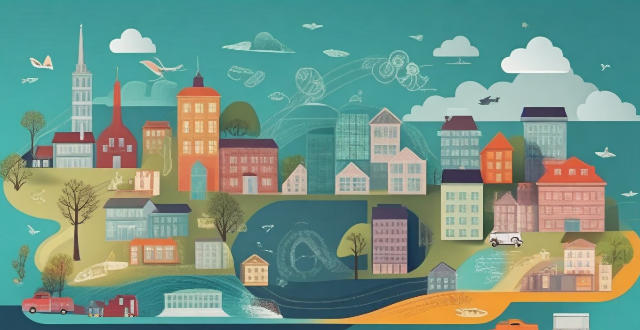
How does the Paris Climate Agreement address climate justice ?
The Paris Climate Agreement, adopted in 2015, emphasizes climate justice and the need for all countries to take action to limit global warming. It recognizes the unequal impacts of climate change on vulnerable communities and developing countries, and provides mechanisms for financial support, capacity building, and loss and damage compensation. The agreement aims to create a more equitable and just response to the global challenge of climate change.

What role do international organizations play in promoting climate justice and human rights ?
International organizations play a crucial role in promoting climate justice and human rights by setting standards, offering technical assistance, facilitating dialogue, monitoring progress, and raising awareness.

How can multicultural education promote social justice and equality ?
The text discusses the role of multicultural education in promoting social justice and equality. It emphasizes that this approach helps in recognizing and valuing differences among individuals, encouraging open-mindedness, addressing stereotypes and prejudices, providing equal opportunities, enhancing intercultural understanding, and preparing students for global citizenship. Overall, multicultural education contributes to creating a more equitable and harmonious society by fostering inclusivity and breaking down barriers.
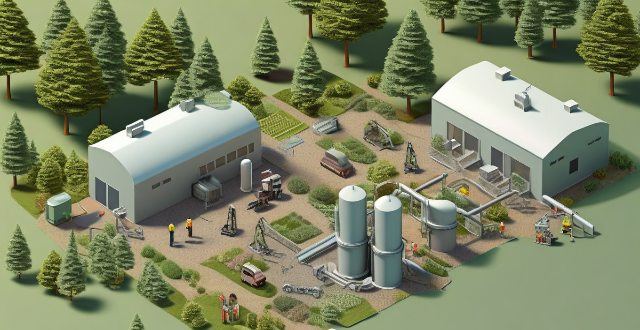
What role do developed countries play in achieving climate justice ?
The article discusses the role of developed countries in achieving climate justice. It outlines their historical responsibility, technological advantage, financial resources, and leadership in policy influence. Developed nations are responsible for a significant portion of greenhouse gas emissions due to early industrialization and higher per capita emissions. They also have the capability to drive innovation in clean energy technologies and facilitate technology transfer to less developed countries. Financial assistance through climate funds and green investments is essential for adaptation and mitigation efforts worldwide. Leadership in international agreements and stringent domestic policies set global benchmarks and encourage other nations to adopt cleaner practices. Overall, developed countries play a crucial role in bridging the gap between developed and developing nations and working towards a more equitable future for all.

What is the role of gender equality in achieving climate justice and sustainability ?
Gender equality is a key component in achieving climate justice and sustainability. It ensures equal opportunities for all individuals to participate in decision-making processes related to climate change mitigation and adaptation strategies, including access to education, healthcare, and economic resources. Gender equality recognizes the vulnerabilities of women and girls affected by climate change, promotes inclusivity, enhances resilience, drives innovation, and addresses intersectionality. Strategies for achieving gender equality in climate action include incorporating gender perspectives into policies, increasing representation, providing resources, encouraging collaboration, monitoring progress, educating stakeholders, advocating for legal protections, promoting cultural change, supporting research, and sharing best practices.

How can we achieve climate justice in a global context ?
Achieving climate justice in a global context requires addressing the root causes of climate change, promoting equitable solutions, and prioritizing those most affected by climate impacts. Key strategies include understanding climate justice, reducing emissions through renewable energy, sustainable transportation, and afforestation/reforestation; adapting to impacts with infrastructure resilience, water management, and agricultural practices; supporting vulnerable communities through international cooperation and community empowerment; implementing legislation and policy on carbon pricing and environmental regulations; advocating for awareness through education and grassroots movements; investing in research and innovation in climate science and clean technology development; and ensuring corporate responsibility with sustainable business practices and accountability.

What are some challenges to achieving climate justice ?
Achieving climate justice, which aims to distribute the benefits and burdens of climate change fairly, faces numerous challenges. These include a lack of political will due to industry lobbying and complacency; economic disparities between developed and developing nations as well as intergenerational equity concerns; insufficient funding for adaptation and mitigation efforts; technological and infrastructure limitations in scaling up clean technologies; social and cultural resistance to change; an information and education gap leading to misinformation and poor decision-making; legal and policy barriers such as weak legislation and difficulties in international cooperation; natural resource extraction pressures from fossil fuels and deforestation; population growth and urbanization increasing consumption patterns and creating urban heat islands; and uncertainty and risk perception issues where scientific uncertainties and risk downplaying can delay action. Addressing these challenges requires a comprehensive approach involving robust policy frameworks, increased public awareness, enhanced international collaboration, and investments in equitable and sustainable solutions.